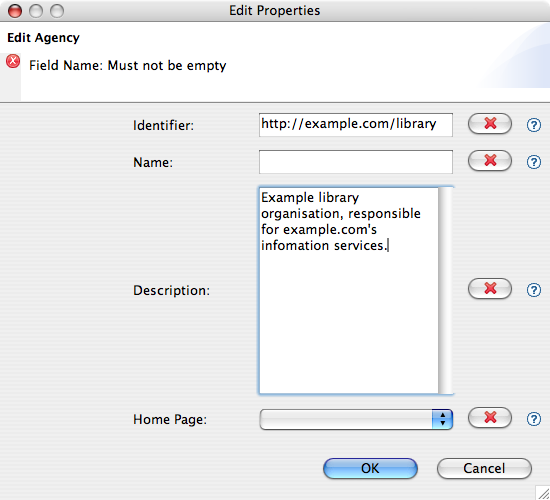
The user has not used it before. When first run the client asks for information about the agency. This will only be seen once (unless the user wishes to make changes). The form warns the user about missing required information, such as 'name'.

The user is now presented with some possible tasks. They are interested in creating a new Dublin Core application profile, and hence choose that option.
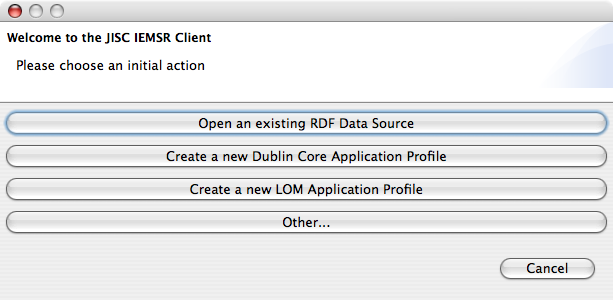
The user is now asked to give some overall details for the profile.
This profile is a first attempt by the user. They give a title, description, etc., and set the status to 'private', indicating that this is work in progress currently
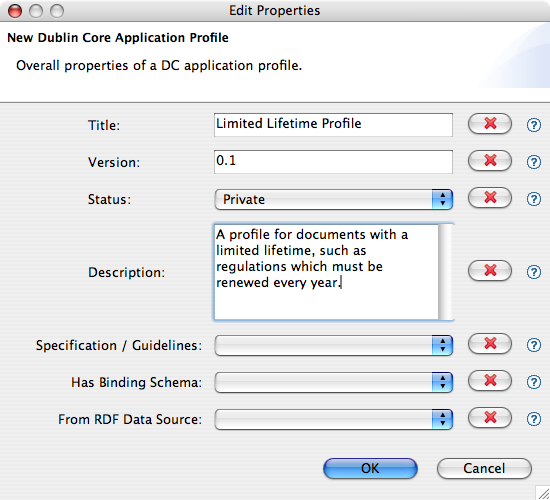
The elements required are (roughly):
The user searches the registry for 'title', and dc title, but also dct alternative (which appears to be useful). Both are added to the profile by selecting all and pressing 'Add'. Similarly for 'creator' and 'description'. In the case of description dc description is used (although RDN annotation may have been relevant).
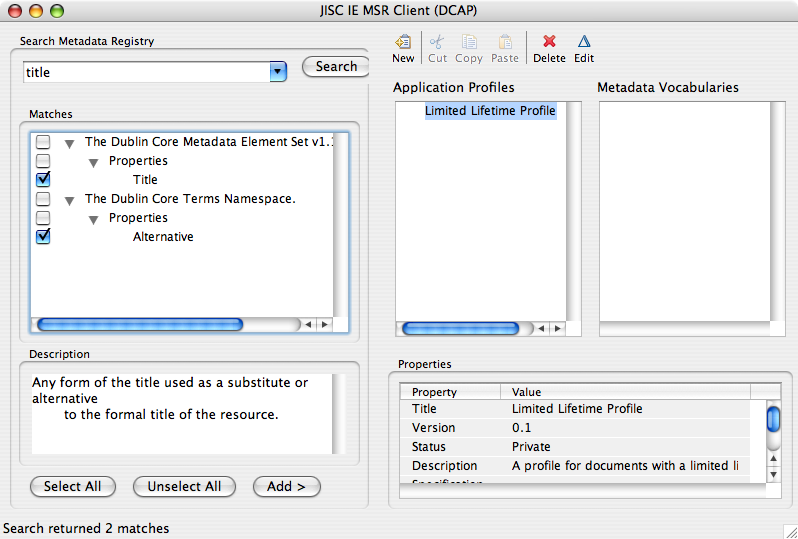
Finally the date search reveals a host of possibilities. dct valid is chosen, since it fits the required usage, but the user also notices the 'RSLP Date Range' class / encoding scheme. By selecting 'valid' in the profile, this scheme is added to the usage of valid.
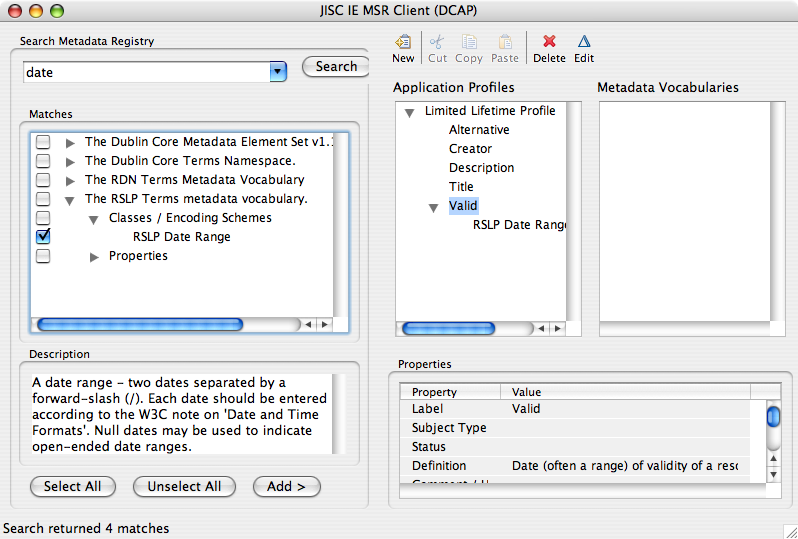
The profile is complete, but the user wishes to indicate that some elements are mandatory (title, valid), some are optional but recommended (description, creator), and others simply optional. Each element usage is selected, edited, and the required obligation is selected from the list.
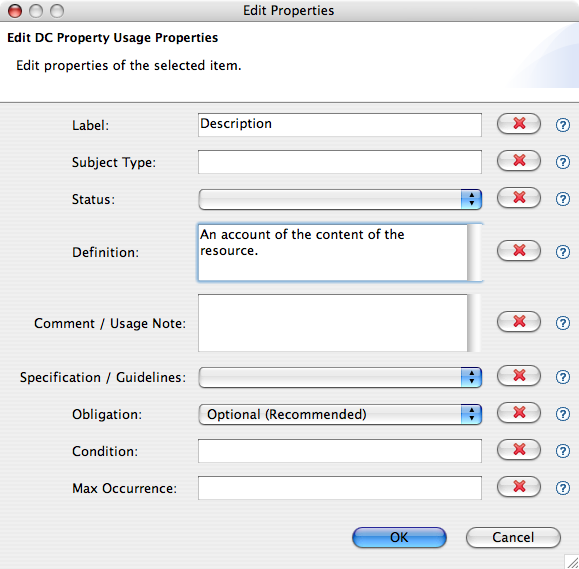
The user had a schema already for this scenario, which allows mechanical validation. This is available at http://example.com/library/ll.xsd. The user wishes to indicate this from the profile.
By using the document manager (File -> Edit Documents) a new document is created, and its properties edited. It is a binding schema, and the location, a title, and description are given.
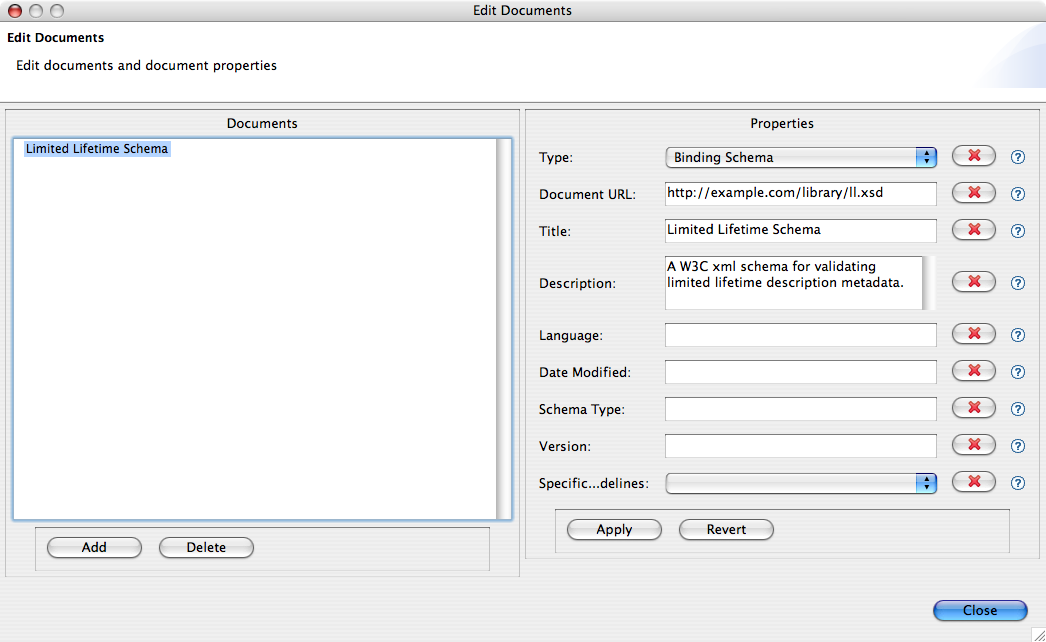
Returning to editing the profile, the binding schema can now be selected as the value for 'has binding schema'.
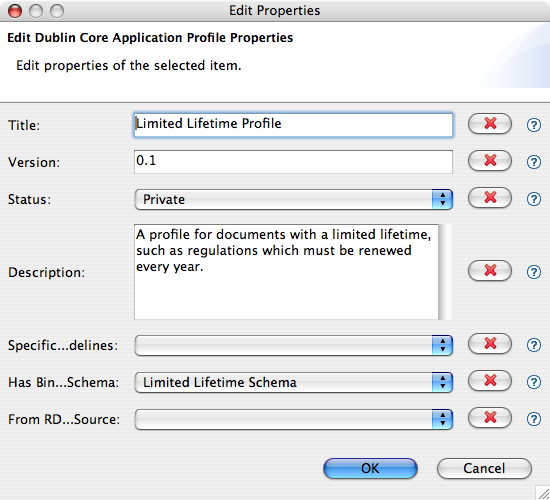
The session is saved, and may be submitted either via the web, or directly using the client.